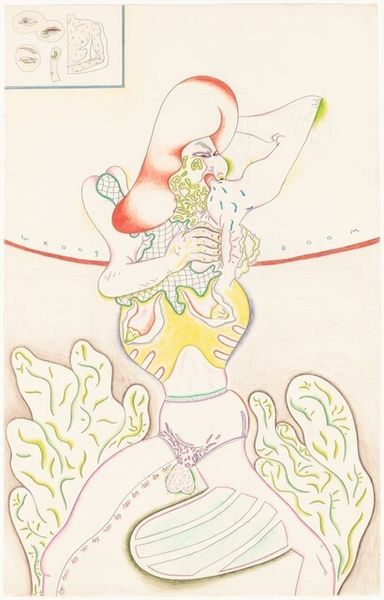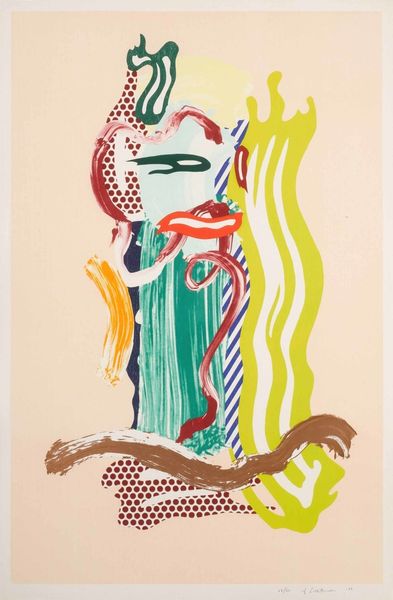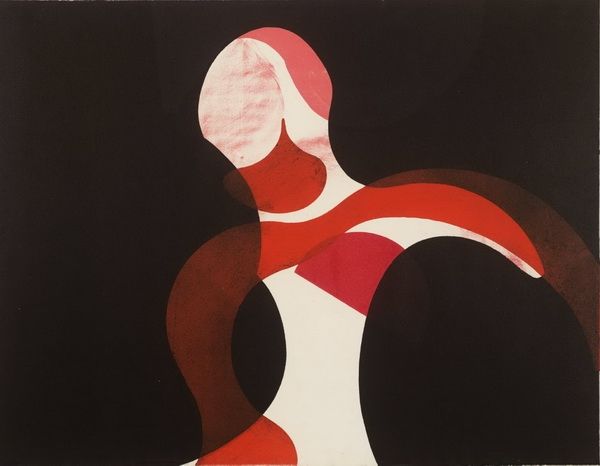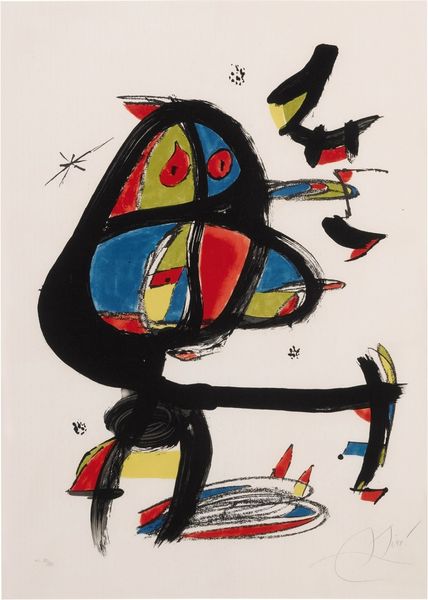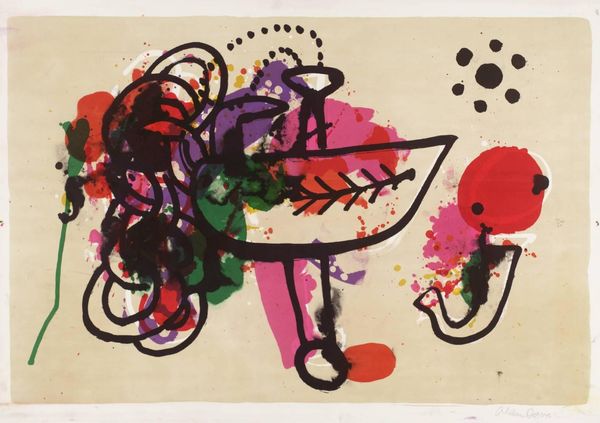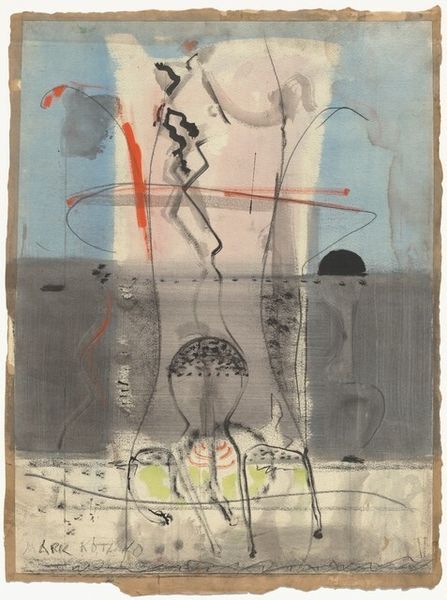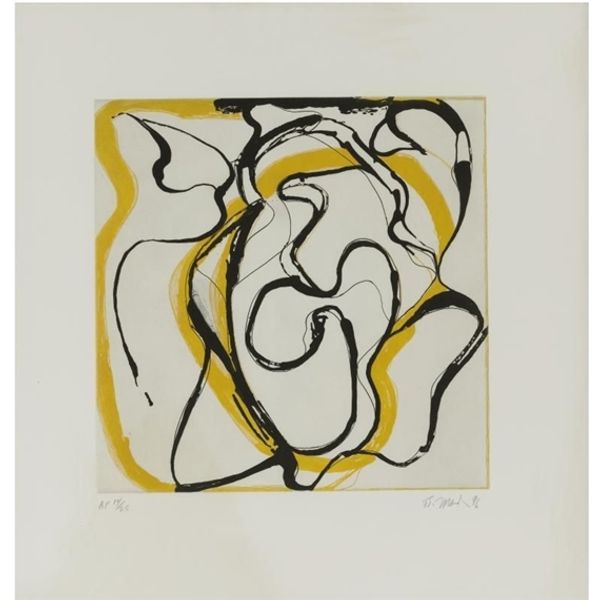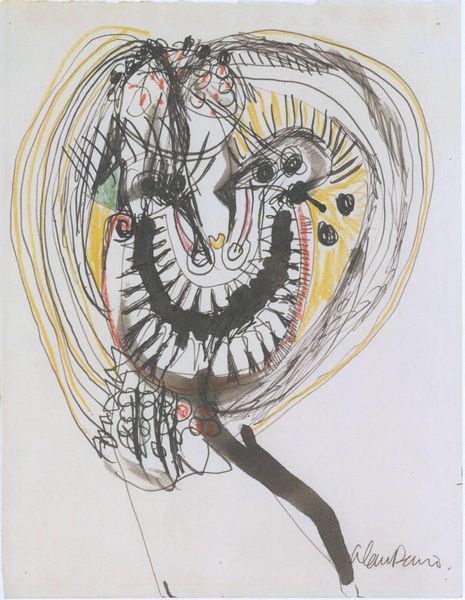
print, linocut, acrylic-paint
#
cubism
# print
#
linocut
#
acrylic-paint
#
figuration
#
linocut print
#
geometric
#
naive art
#
line
#
watercolour illustration
#
modernism
Dimensions: 42.5 x 32.8 cm
Copyright: Fernand Leger,Fair Use
Curator: Let’s discuss Fernand Léger’s print, "Circus," created in 1950. It’s currently housed at the Musée National Fernand Léger in France. Editor: Well, my immediate reaction is… vibrant yet unsettling. The stark lines combined with those bold dots against the fragmented form – there’s a tension that pulls you in. Is she dancing, or trapped? Curator: Léger, known for his contributions to Cubism and his focus on the dynamism of modern life, often depicted the circus. Consider the cultural context: post-war Europe grappling with rebuilding, and the circus served as a potent symbol of resilience, spectacle, and perhaps a touch of escapism. Editor: I can see that. The use of the fragmented body is interesting, a female form stylized almost to the point of abstraction. How does this relate to the period’s broader conversations about the objectification and performance of femininity? Curator: Absolutely. Think about the linocut print medium; that suggests a level of accessibility. Léger believed art should be for everyone. He's playing with form and color to explore not just representation, but the experience of witnessing the circus—the energy and controlled chaos. The figure, with her simplified form, becomes almost every woman, pushing back on rigid gender norms. Editor: So the bright color, the simple, almost naive forms belie the artwork’s complex conversation regarding both art’s place in society and shifting cultural dynamics regarding the female body. Are those red dots a deliberate statement, a commentary about performance and scrutiny? Or even an allegory for women and performance. Curator: Perhaps. And the way Léger employs linocut emphasizes graphic simplicity. These choices also comment on fine art tradition – questioning what "high" art truly constitutes when accessible mediums render visually stimulating results. The circus allowed him to explore these avenues. Editor: Léger's bold move opens a wider consideration, indeed. Now, I view it in this artwork as less whimsical spectacle and more the tightrope of being a woman within those structures. Curator: That’s a powerful perspective. Léger’s “Circus,” seemingly a cheerful circus scene, becomes a poignant symbol through this lens into societal issues.
Comments
No comments
Be the first to comment and join the conversation on the ultimate creative platform.

